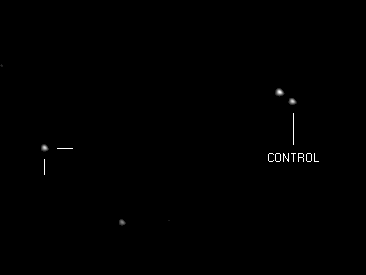
ECLIPSING BINARY STAR
AD ANDROMEDAE
12th November 2004
AD Andromedae is a binary star with two almost identical components. They orbit each other every 0.986 days and from our vantage point, the stars eclipse each other twice every orbit producing a drop in total brightness of the system from magnitude +11.1 to +11.6 lasting approximately 4 hours (The primary and secondary eclipses are almost identical in depth) Timings (Ephemeredes) for a number of eclipsing binaries can be found here http://www.rollinghillsobs.org:8000/tools.html
On 12th November this star was observed for 3.5 hours covering the predicted time of the secondary minimum at midnight UTC (Julian Date 2453322.5)

AD Andromedae 12th Nov 2004 1533 x 7sec
VC200L at f7 Vesta SC3 "PIPCAM" Green filter but no IR block
Over 1500 7second exposures were made and stacked in batches of 20. (A green filter was used in an attempt to minimise any differential effects of atmospheric extinction due to differences in colour of the target and control stars. The IR blocking filter was accidentally left out unfortunately however, which will have negated the effect). The brightness of the target star relative to the control of similar brightness was measured in each stacked image using the TELEAUTO software aperture photometry function.
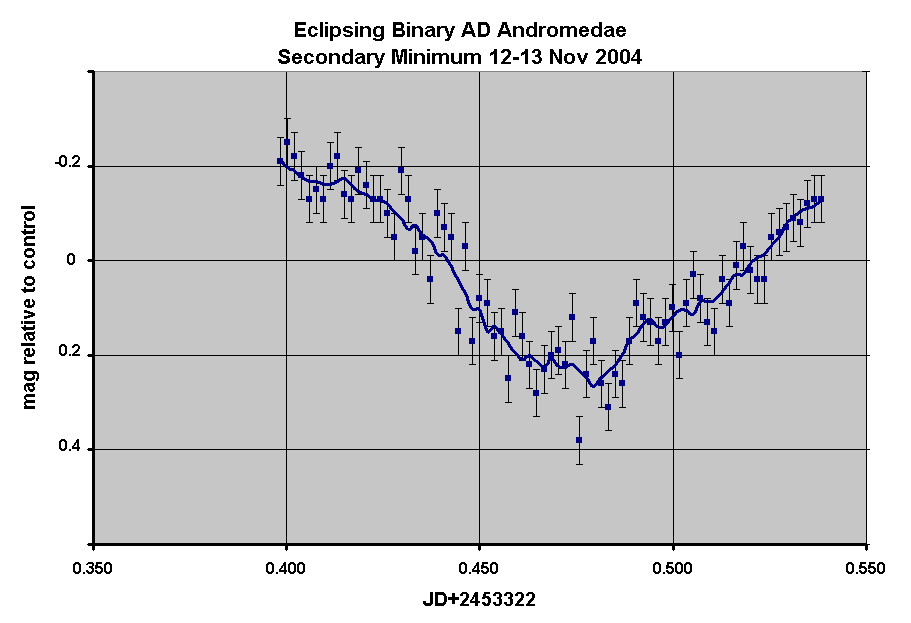
The results of the photometry measurement were plotted against the Julian Date together with a 15 minute running mean. The error bars on the individual measurements are calculated by the Teleauto software based on the statistics of the measured star and background counts (ie an estimate of the statistical variability not including systematic errors) This was typically 0.05 mag during the run. This reduces to 0.02 for the running mean. The observed drop in brightness over the run was 0.45 mag but the eclipse had already begun at the start of the run. The time of the minimum was JD 2453322.48, approximately 30min earlier than the time predicted by the BHO ephemeris.
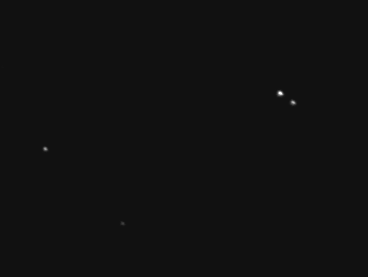
The images taken at the start of the run and around the minimum have been combined to produce this animation which shows the dimming of the target star at minimum. (Because the brightness of all stars changed from image to image during the run due to variations in atmospheric extinction, the brightness of the images were adjusted to match the brightnesses of the other stars in the field)
An internet search has turned up this published light curve measured in 1966 using a 26 inch refractor Acta Astronomica Vol 16 no 4
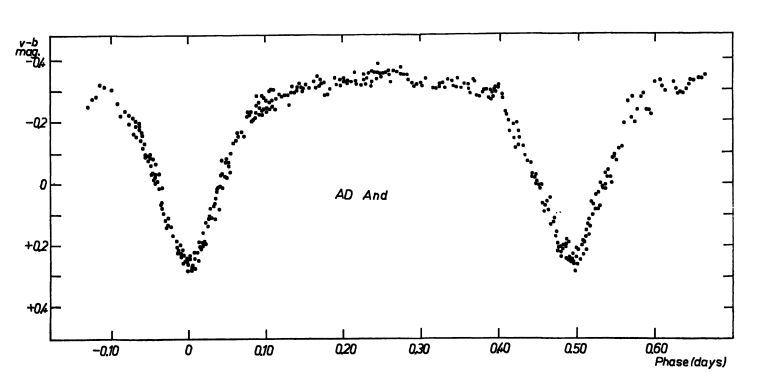
Overlaying the results presented here on this curve shows a good agreement.
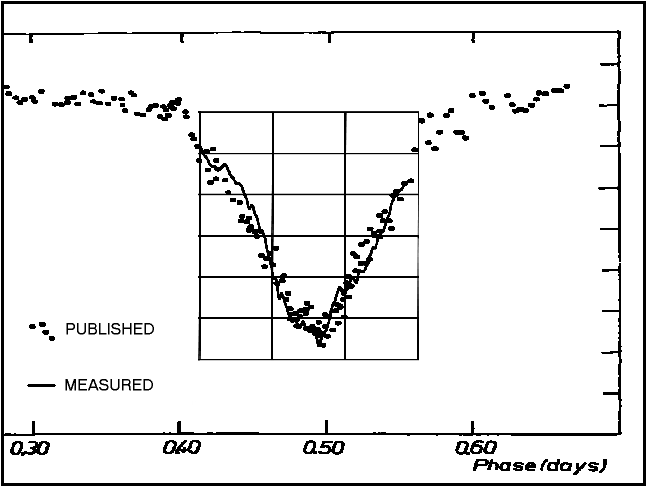
This confirms that the SC3 modified webcam is capable of producing high precision photometry data with a precision of the order of 0.02mag in a 15min average for an 11th magnitude star over periods of at least a few hours using an 8 inch aperture.